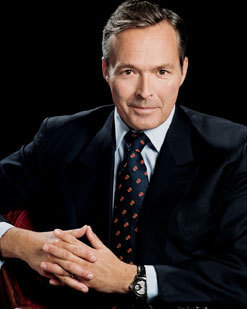Karl-Friedrich Scheufele, co-president of Chopard: We fully share the values advocated and defended by the Fondation de la Haute Horlogerie. This is the main reason why we were prompted to join. Also, the FHH provides training at various levels across the world, which is very important in our trade. And then there’s the information network that they offer, particularly through their website which is exhaustive and very well laid out. In a word, we identify with the Fondation as an organisation which defends the values that we represent and knows how to communicate them. In our field, huge amounts of effort go into the development of watchmaking calibres, so it is very important to be able to talk about it.
The last decade has seen a huge leap in the world of the mechanical watch. In all watchmaking history, there have never been so many new designs, new complications and new brands. In short, there has been a general enthusiasm for this particular area of watchmaking that has led to a number of efforts by the brands, the vast majority of which have been very positive and very well thought through. It has to be said, though, that some of them do not respect the rules of Haute Horlogerie, which can be detrimental for the entire profession.
Generally, such a move upmarket is good for innovation, research and everything associated with it. However, there is the danger, I feel, of leaving behind watch lovers who cannot follow such changes from a budgetary point of view. Haute Horlogerie is not just about creating dreams, it must also remain accessible.
Chopard has a long watchmaking tradition but one that was interrupted where movement design and production are concerned. That is why we have decided to return to our roots as an Haute Horlogerie company by recreating a manufacture in Fleurier, with the goal of producing our own movements for the L.U.C. range. But it is still early days. I see this as an advantage, however, as it enables us to express ourselves freely without having to pay too much attention to rather old traditions which could, in certain cases, hold us back. Our recent L.U.C Tech line is a perfect illustration of this, with models that represent a cohabitation of innovation and tradition.
Although the year started extremely well, we should wait for the end of the year for a precise idea. Recent events in the financial markets, such as the current economic downturn, mean that we should remain prudent and be prepared for a certain slow-down. At the moment, we have no visibility. What I will say is that the markets no longer inspire much confidence. We must now wait to see whether we are facing a long-term phenomenon or not.
What I would say is that our timing was good and my forecasting has proved quite realistic. Indeed, I thought it would take a good ten years to create the foundations of a manufacture with the necessary know-how. Yet today we have precisely that: a good pool of industrial skills and craftsmanship that enables us to excel in the world of Haute Horlogerie, albeit still on a small scale. Indeed, our L.U.C. collections represent 4,000 to 5,000 pieces out of a total of 75,000 watches produced each year at Chopard. Our challenge today is therefore to spread this know-how and move up a gear. That said, if our ambition is effectively to increase the sales of our L.U.C. models, we are obliged to take into account delivery times for particular components, which, as you know, are always quite random. Also, it is out of the question for us to compromise on quality, so we are going forward carefully, without skipping steps. So if I had to learn just one lesson from this adventure, it would be that when we launched, I did not fully appreciate the difficulties for what they were. If you know what is around the corner, it increases tenfold your courage to reach your goals.
We now have well over one hundred boutiques and we are increasing the number of sales outlets that we own. Last year, we opened our first new-generation boutique, a concept that we plan to roll out this year, particularly in Singapore, if all goes well.
With all the mechanical time-pieces sold in recent years, the number of such watches worldwide really represents a challenge for the watchmaking industry. We have to admit, though, that the profession is not currently in a position to be able to deliver this service with satisfactory rapidity. While the problem was identified a long time ago, tackling it requires a lot of effort, not least because the Swiss watchmaking industry is made up of numerous small entities. It is here that the advantages of having your own manufacture come into play. Since everything is done on your premises, it is that much easier to take action in connection with movements and components that come directly from our workshops. Ensuring a viable after-sales service for the longest period possible is therefore a veritable challenge for the profession in the years to come.












